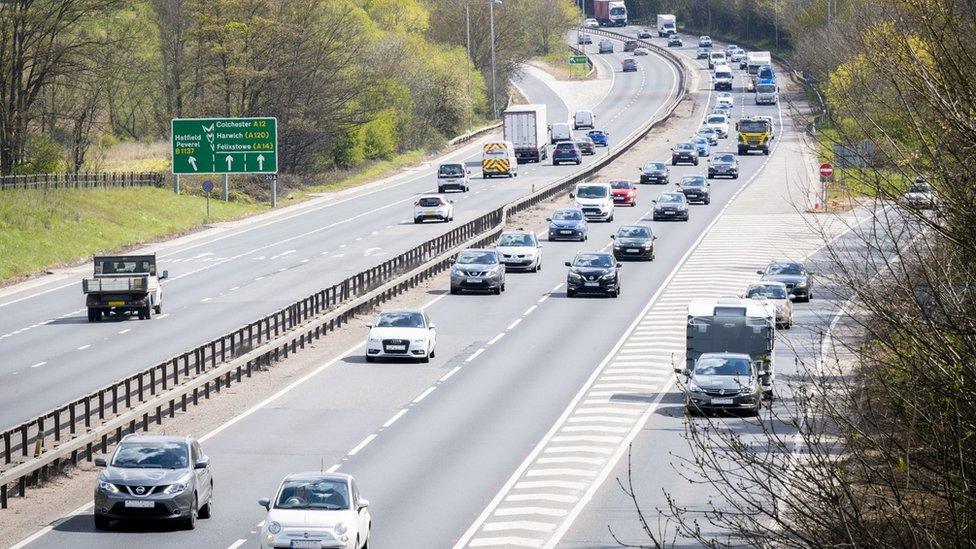The villagers in fear of new quarry plans
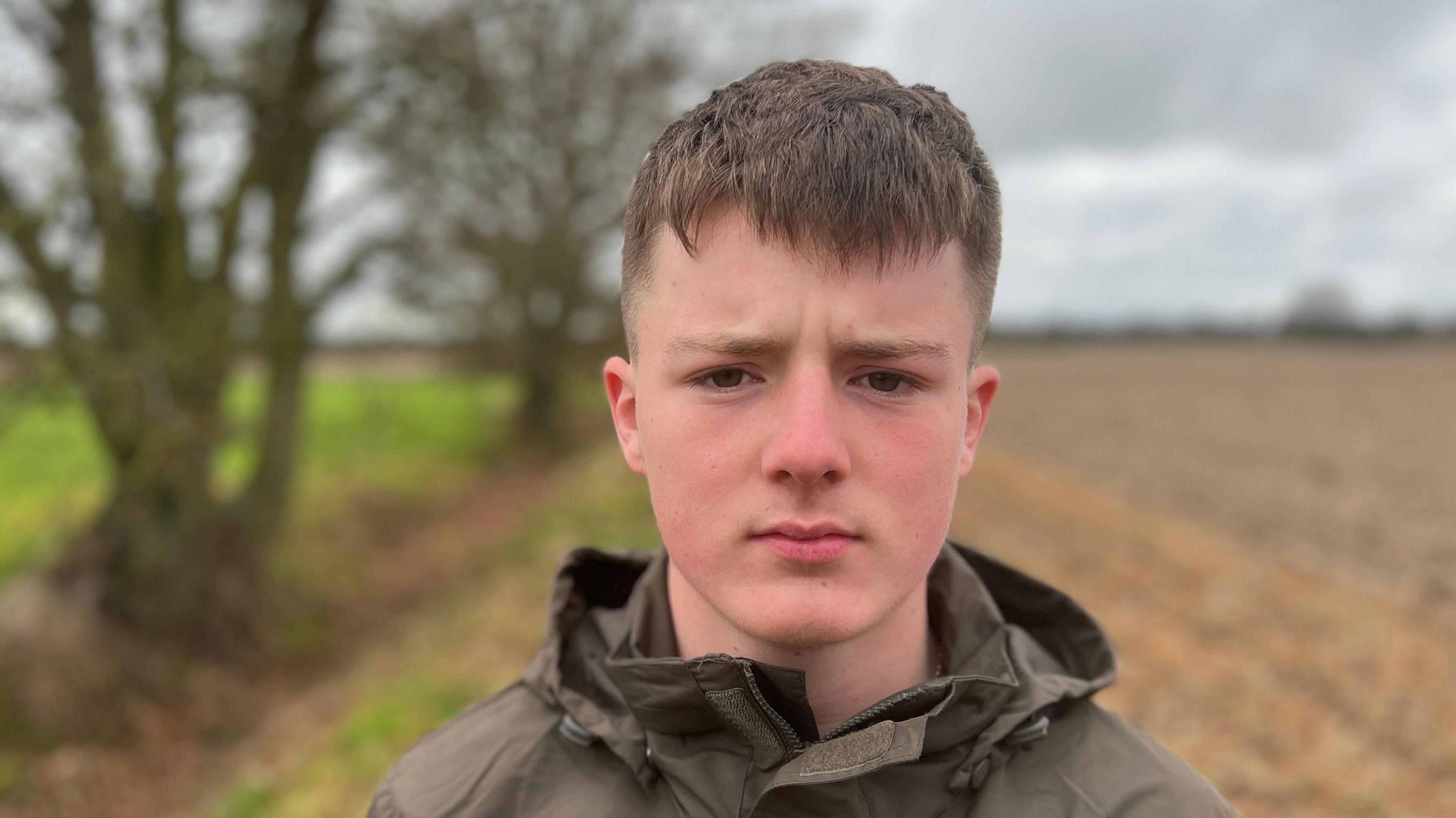
Tommy Marns, 19, has been raising awareness online about a quarry proposal near Thorrington in Essex
- Published
Villagers fear their communities could be “ruined” if proposals for sand and gravel quarries go ahead.
More than 50 plots across Essex are being considered as quarry sites.
Essex County Council says it has to find locations for the extraction of up to four million tonnes of sand and gravel each year.
About 80% of the minerals sourced will be used in building 150,000 new homes in Essex by 2036.
North Essex has one of the largest sources of high quality sand in the UK.
But residents who live near the proposed new quarries say they are worried about “noise” and “dust”.
Most of the proposed sites, external are near the A12 between Chelmsford and Colchester.
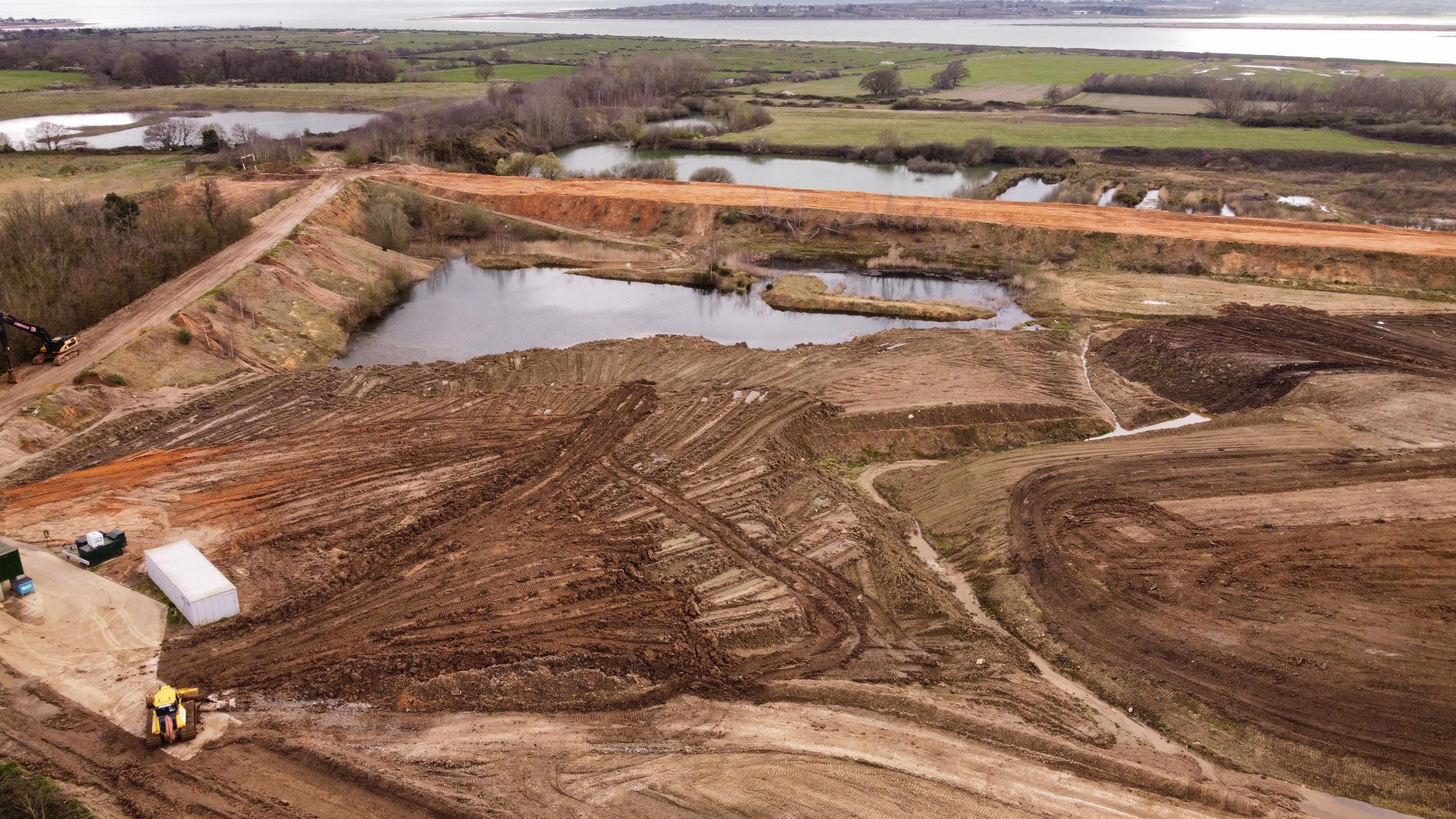
There are 52 sites in Essex being considered for new quarries
Tommy Marns, 19, has lived his whole life in Thorrington, between Colchester and Clacton. He has used social media to raise awareness of a proposed quarry the size of 130 football pitches to the south of his village.
“it’s so important for young people to have access to this fantastic countryside and I believe at the minute it is being torn apart - and I’m sick of seeing this being torn apart," he said.
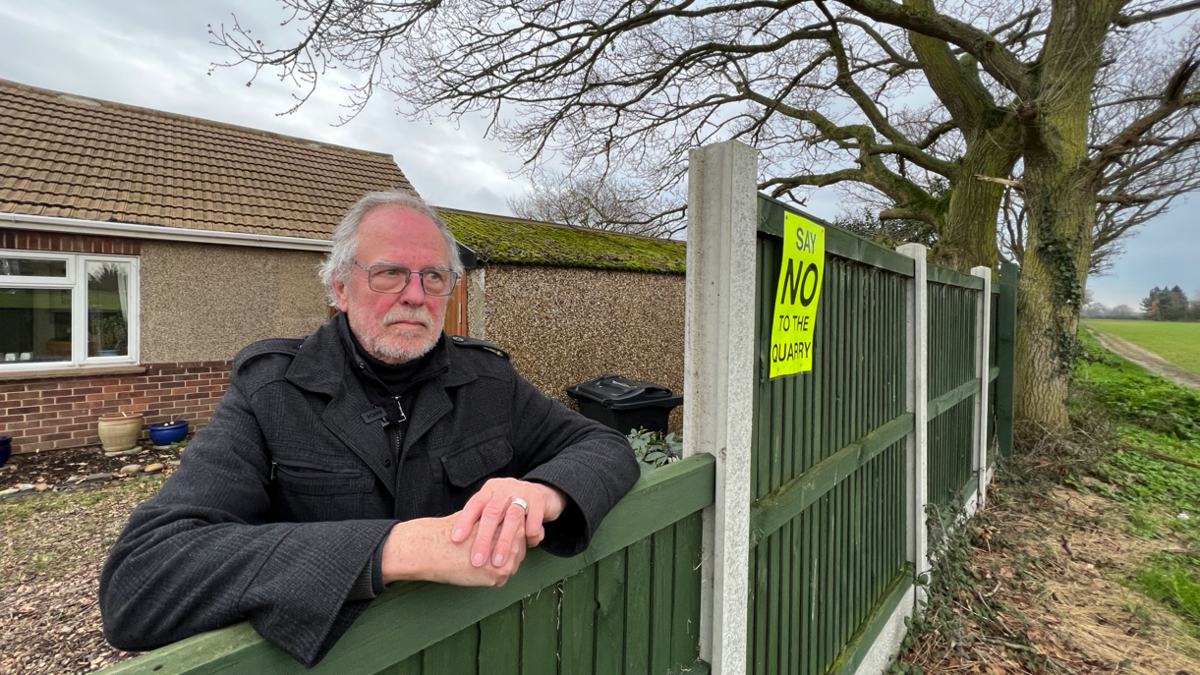
John Greenland's home is next to a field that would become the access road if the quarry goes ahead
Fellow Thorrington resident John Greenland's home is next to a field which would become the access road to the quarry, if it goes ahead.
“It’s going to be constant, with these lorries coming out in the summer it’s going to be dust everywhere." he said.

Michela Luca says the village pub she runs will be affected if the quarry goes ahead
At the village pub, landlady Michela Luca has been helping older people respond to the quarry consultation.
“We have lots of people coming walking with their dogs from Brightlingsea through the fields and this is going to die," she said. "No one is going to walk here for a pint.”
Ms Luca said she fears a quarry would "ruin the idea" of the village.

Former quarries near Brightlingsea have been returned to nature and some are used for fishing.
A report on the proposal said the Thorrington site was “a highly sensitive location” 280m (918ft) from the Colne Estuary, itself a site of special scientific interest and an area for overwintering water birds.
The quarry area includes ancient trees and the “ecological impacts are likely to be major and it is likely to require high levels of mitigation to make the site acceptable, the report stated.
Two miles down the road, in Brightlingsea, the Moverons quarry is approaching the end of its near 50-year service life.
Some of the disused pits have been returned to nature as fishing and wildlife lakes.
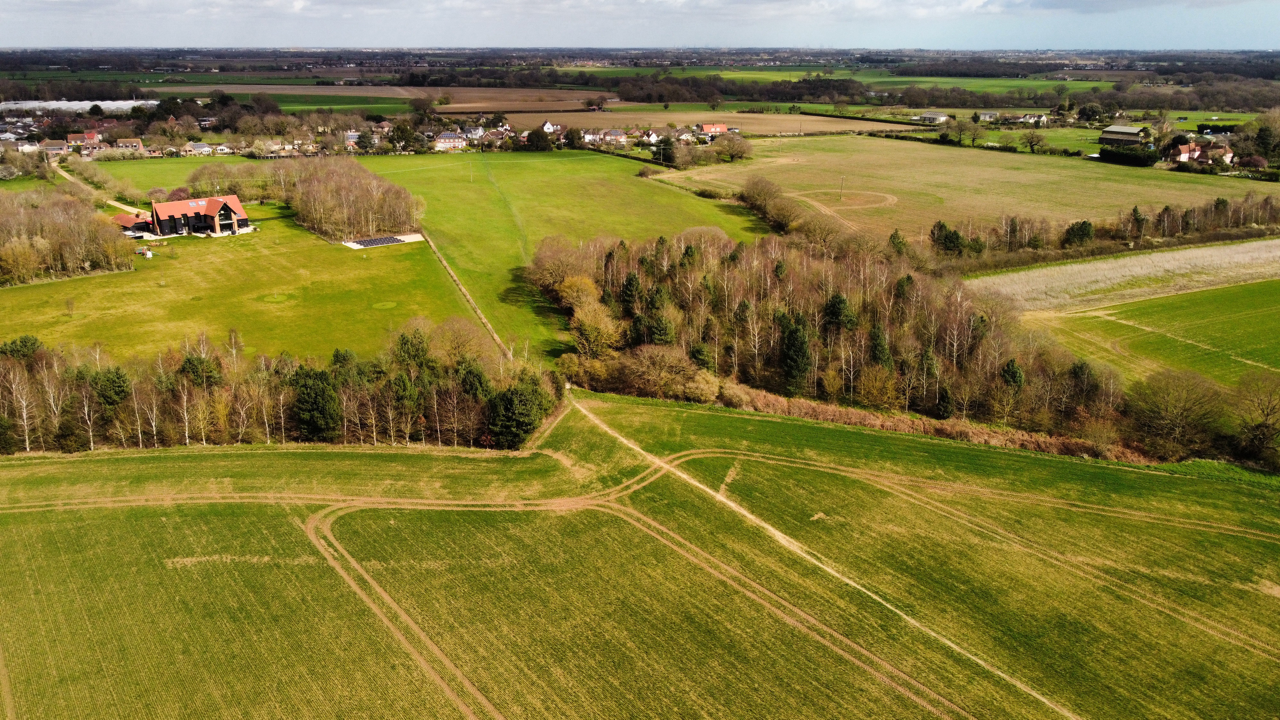
The fields south of the village of Thorrington are being considered as sites for sand extraction
Lee Scott, a cabinet member on the Conservative-run council, said the authority was "obliged" to have a mineral extraction plan in place.
It was "not an optional exercise”, he said, adding: “We need them for our schools, homes, hospitals and we have to come up with the minerals."
However, he said all 52 sites suggested were merely proposals at the current time.
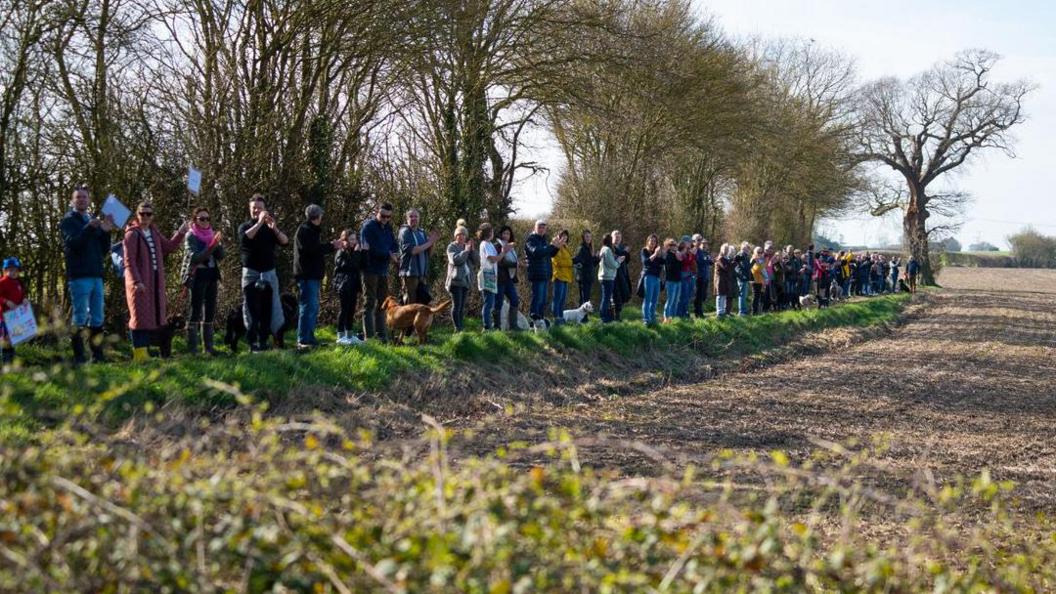
Residents in Coggeshall have been campaigning against extending a quarry south of the village
But the proposals have already encountered fierce opposition.
In Coggleshall, between Colchester and Braintree, more than 200 people formed a human chain along a public footpath in protest about the possible extension of an existing quarry.
As of 31 December 2021, there were 20 active sand and gravel quarries, two brick clay sites at Bulmer Brickfield and Marks Tey and one chalk extraction site in Uttlesford district.
In England, 0.1% of land is used for mineral extraction, external or landfill.
The public has until 17:00BST on 9 April to have their say on the proposals.
Follow East of England news on Facebook, external, Instagram, external and X, external. Got a story? Email eastofenglandnews@bbc.co.uk, external or WhatsApp us on 0800 169 1830
- Published26 March 2024

- Published7 March 2024
